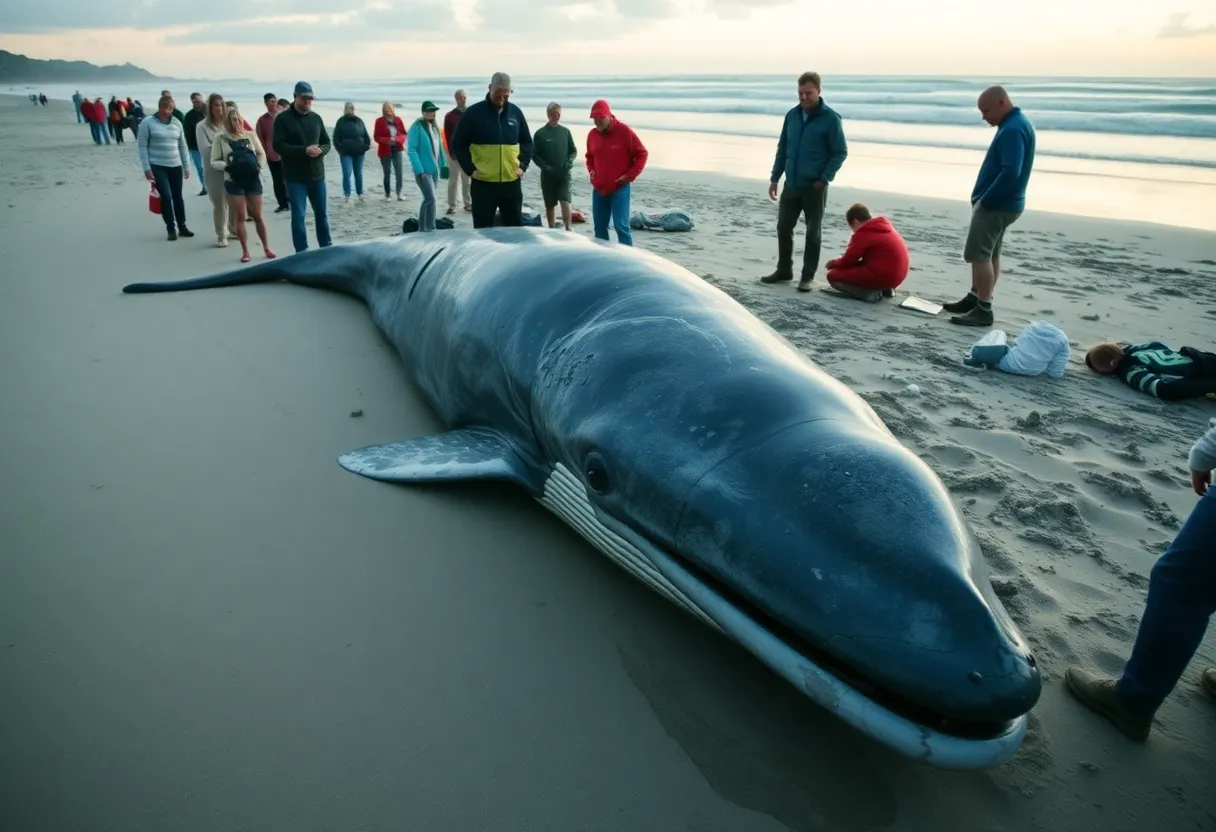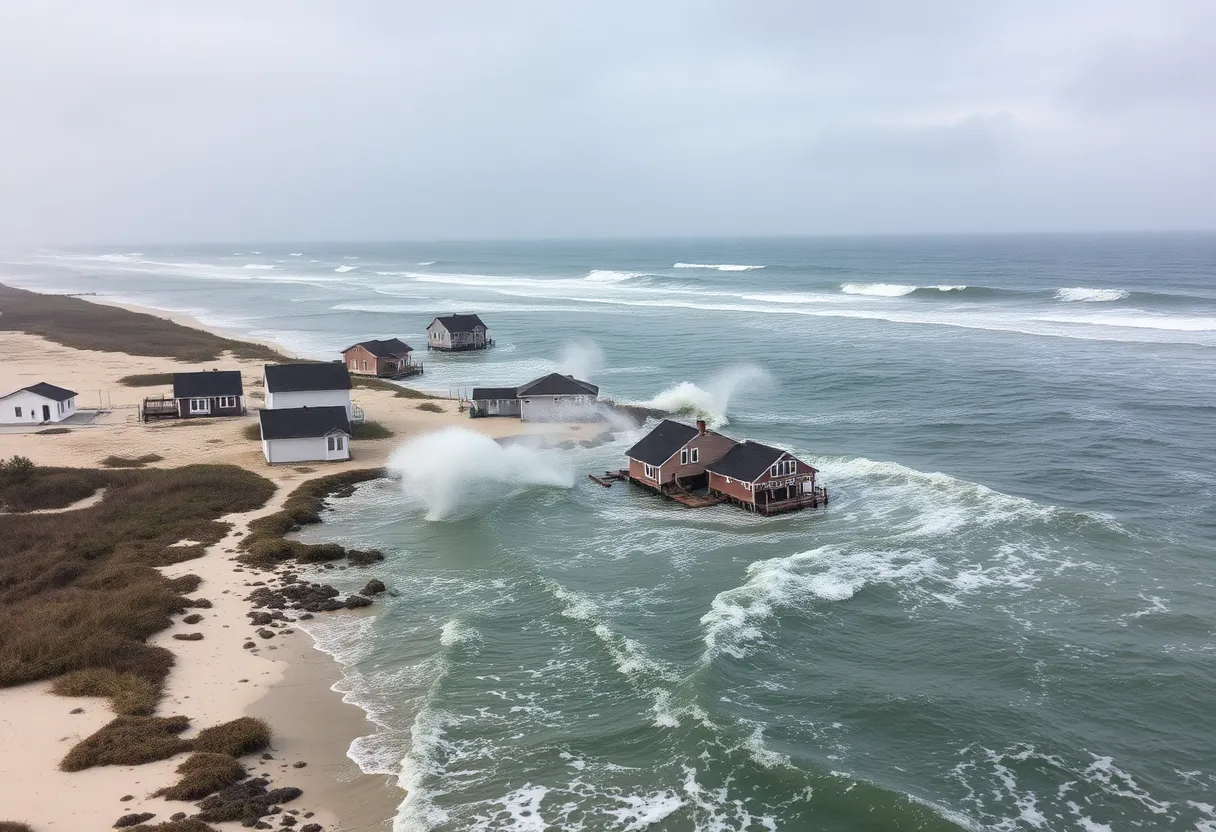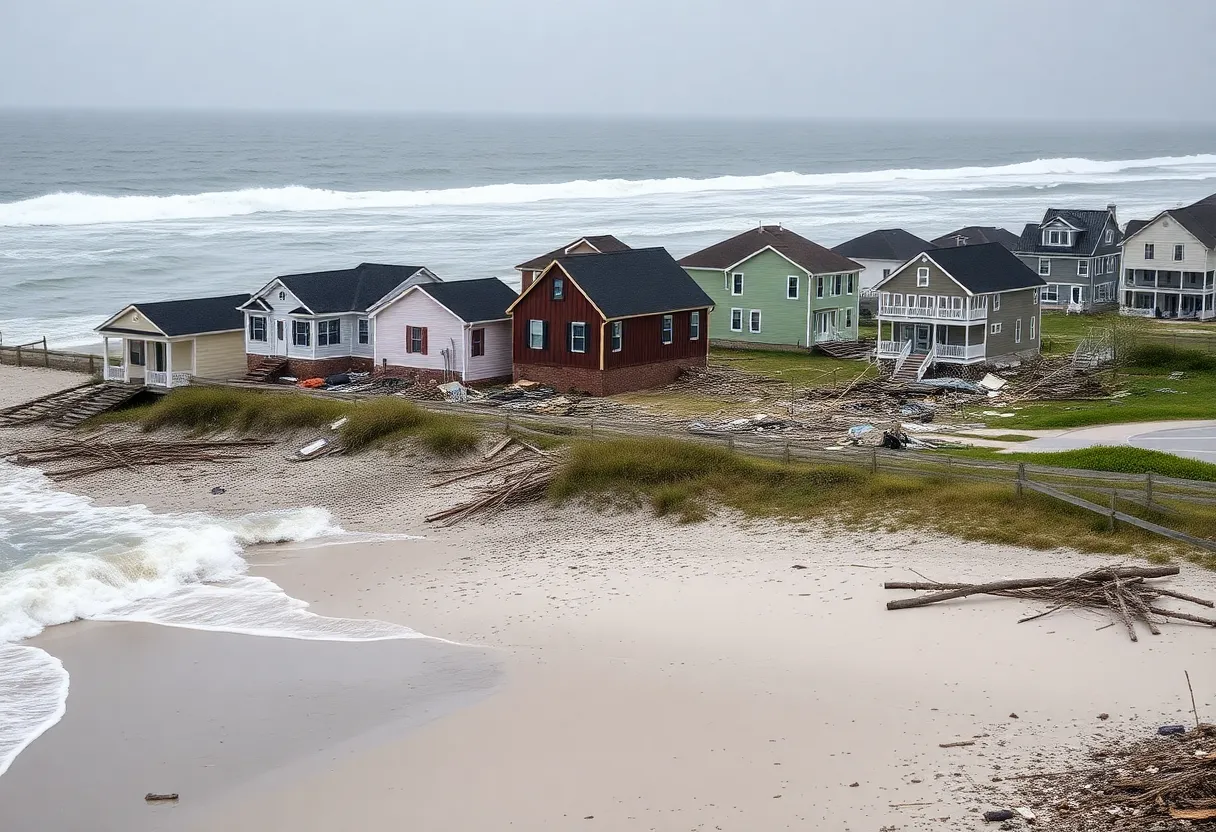News Summary
A young 27-foot-long humpback whale washed ashore in Kitty Hawk, North Carolina, sparking grief among locals. Marine biologists conducted a necropsy to investigate its death, revealing signs of scavenging and unusual stomach contents. This incident highlights ongoing concerns about humpback whale mortality due to vessel strikes and entanglements.
Young Humpback Whale Found Dead in Kitty Hawk: Community in Mourning
A 27-foot-long young female humpback whale weighing approximately 19,000 pounds made headlines when it washed ashore in Kitty Hawk, North Carolina, near the Bennett Street beach access point. This unfortunate discovery occurred on Friday, sparking both curiosity and grief among locals who were drawn to witness the majestic creature, despite the tragic circumstances surrounding its death.
Marine Biologists Conduct Necropsy on the Stranded Whale
On Saturday morning, marine biologists took to the sandy shore to perform a necropsy on the whale, aiming to uncover the reasons behind its untimely demise. Officials from the National Oceanic and Atmospheric Administration (NOAA) are actively investigating the matter. Initial examinations revealed no fractures in the whale’s bones; however, unusual pooling of blood in the head raised concerns, prompting the team to take tissue samples for further analysis.
Whale Movement Patterns May Hold Clues
Marine experts speculate that this young humpback was likely migrating south for the winter, a behavior typical of the species. Juvenile humpback whales often venture offshore in the Mid-Atlantic, which contributes to an increase in strandings during this migratory period. Alarmingly, this year has seen nine dead whales reported off the coasts of North Carolina and Virginia, with five being confirmed as humpbacks.
Identifying Common Threats to Humpback Whales
As investigations continue, marine researchers note that consistent causes of death for humpback whales include vessel strikes and entanglements, particularly related to fishing gear. The ongoing conversation about offshore wind turbine construction potentially disrupting whale habitats adds another layer of complexity to understanding these animals’ safety. Yet, it is crucial to highlight that as of now, there is no concrete evidence to substantiate claims linking wind farms to whale fatalities.
Communities Respond to the Stranding
As the whale remained on the beach, the intense smell became a topical conversation among local residents, further deepening their shared sorrow. Regardless of the sadness surrounding the event, admirers of the whale expressed awe at its magnificent nature, a poignant reminder of the link between humans and these marine giants. Local law enforcement took to social media platforms to remind the public not to touch or disturb the stranded whale, emphasizing the importance of respecting marine wildlife.
A Closer Look at Necropsy Findings
In addition to the absence of fractures, necropsy results suggested evidence of shark scavenging and decomposition in the whale’s internal organs, indicating that the animal may have been deceased for some time before its arrival on shore. Unusual stomach contents, such as black sand and scallop shells, hint at the possibility that the whale could have originated from a region located further south.
Ongoing “Unusual Mortality Event”
This incident is part of a troubling trend known as an “unusual mortality event” for humpback whales, which has been ongoing since 2017. Most recent findings have revealed a connection between these deaths and issues related to ship strikes or entanglements. As a result, researchers continue to stress the importance of reporting sightings to the whale help hotline at 877-WHALE-HELP, urging the public to be vigilant in these matters.
Future Plans for the Whale
Following the necropsy, the whale’s remains are expected to be buried on the beach, allowing its final resting place to be near the waters it once roamed. Additionally, its skeleton has been collected for future educational purposes, preserving its legacy in the community. Unique photographs of the whale’s fluke pattern will also be shared with experts for identification, contributing to a better understanding of individual humpback movements and histories.
As Kitty Hawk processes this unexpected loss, the story serves as a poignant reminder of the challenges these magnificent creatures face in our shared oceanic environment. The community’s shared mourning reflects a collective hope for greater conservation efforts and a deeper understanding of the lives of these astounding animals.
Deeper Dive: News & Info About This Topic
HERE Resources
Tragic Stranding: Young Humpback Whale Found on Kitty Hawk Beach
Tragic Accident on Outer Banks: A Heartbreaking Loss
Humpback Whale Skull Found on Cape Hatteras Beach
Massive Skull Fragment of Humpback Whale Discovered on North Carolina’s Outer Banks
Outer Banks Residents Shocked by Recent Whale Strandings
Exciting Beachcombing Finds: Humpback Whale Skull and First Sea Turtle Nest of the Season Discovered on Outer Banks
Infectious Disease Cited as Culprit for One-Third of Whale Strandings on Outer Banks in March
Rising Whale Deaths Alarm Hampton Roads and Outer Banks Communities, Spark Urgent Call for Marine Conservation
Third Minke Whale Found Dead on Outer Banks within Three Days Amid Rise in Whale Mortality Rates
Additional Resources
- 13 News Now
- Wikipedia: Humpback whale
- Wavy News
- Google Search: Humpback whale washed ashore
- Charlotte Observer
- Google Scholar: Humpback whales
- WNCT
- Encyclopedia Britannica: Humpback whales
Author: STAFF HERE OUTER BANKS WRITER
The OBX STAFF WRITER represents the experienced team at HEREOBX.com, your go-to source for actionable local news and information in the Outer Banks, Dare County, and beyond. Specializing in "news you can use," we cover essential topics like product reviews for personal and business needs, local business directories, politics, real estate trends, neighborhood insights, and state news affecting the area—with deep expertise drawn from years of dedicated reporting and strong community input, including local press releases and business updates. We deliver top reporting on high-value events such as the Outer Banks Seafood Festival, NC VIP Fishing Tournament, and NCBBA Red Drum Tournament. Our coverage extends to key organizations like the Outer Banks Chamber of Commerce and Outer Banks Community Foundation, plus leading businesses in tourism, retail, and hospitality that power the local economy such as Kitty Hawk Kites, Outer Banks Mall, and Avon Fishing Pier. As part of the broader HERE network, including HEREAsheville.com, HERECharlotte.com, HEREGreensboro.com, and HERERaleigh.com, we provide comprehensive, credible insights into North Carolina's dynamic landscape.







